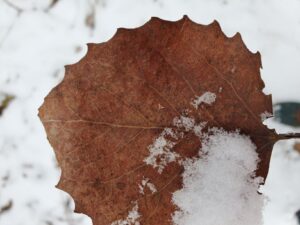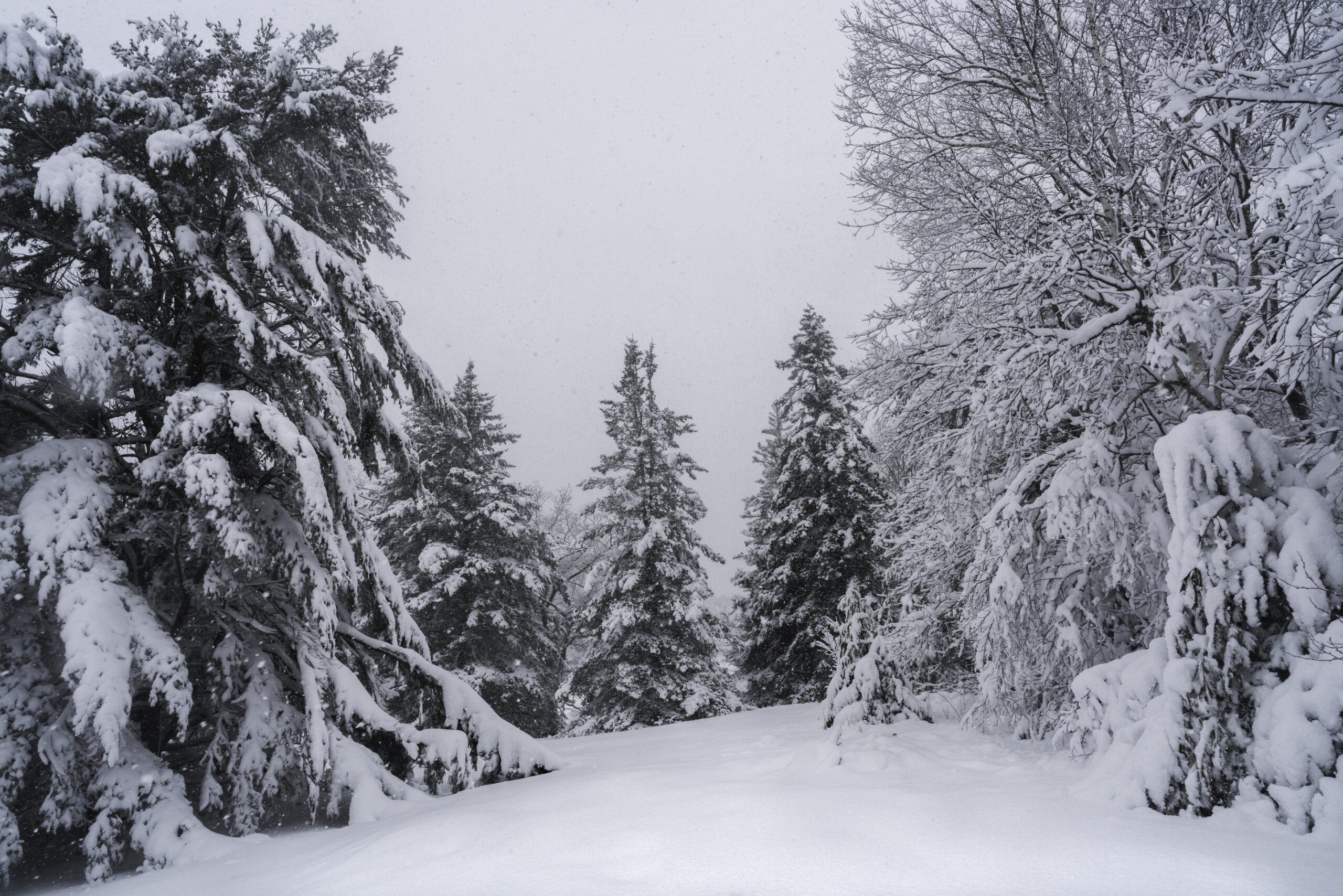January 12: Winter Tree Identification

The Red Pine gets its name from its reddish-brown bark.
Now that winter has set in, it is the perfect time to go for a walk and identify some of our trees while they are in their winter finest. We often rely on the distinct features of leaves to identify trees, but there are a few other traits which are present in all seasons that can be used for tree ID. Bark patterns and textures, leaf buds and scars, tree shapes, and habitat are just a few examples of the characteristics that can help to positively identify a tree. BRLT is posting a self-guided winter tree identification walk for Cross River Preserve that will be rolling out soon, but in the meantime I thought I would offer some helpful tips.

The dead leaves of the American Beech are light tan and tend to remain on trees into winter.
When you encounter a tree you are interested in identifying, start by taking in the tree in its entirety. Stand back a bit and examine the tree from top to bottom, noticing the overall shape of the tree and the pattern of the branches. Next, look at where the tree is growing. Is it found in an open clearing, along an edge, or deep in a forest? Is the area in which the tree is growing wet or is it on a rocky ledge? Once you have taken in the big picture of the tree, it is time to look at the smaller details.
Zoom in on the tree, taking time to examine the bark for texture and patterns. Examine the branches and the leaf buds, noticing the pattern in which they grow. Are the branches and leaf buds directly opposite of one another, or do they alternate in pattern? Other hints can be found by breaking a twig and smelling the tree or by looking for last summer’s leaves on the ground. Some deciduous trees retain their dried leaves in the winter, aiding in identification.

Looking under the snow surrounding a tree reveals a Bigtooth Aspen leaf.
Also important is to recognize is that trees sometimes break patterns, making them tricky to identify. For example, some trees have different bark when the tree is younger versus when it is mature. Also, a tree that grows in deep shade may not have the same appearance as one that has grown in full sun. Sprouted branches arising from stumps may also look very different from the branches of a tree of the same species.
Taking all of these things into consideration, the best way to identify a tree with all of these characteristics is to use a field guide with a key. Lucky for us the state of Maine has put out an amazing field guide to local trees that can be downloaded for free off of the internet or you can purchase a hard copy. To get started identifying winter trees with a key, visit the Maine State Forest Service here: https://www.maine.gov/dacf/mfs/publications/handbooks_guides/forest_trees/index.html
Winter tree identification is a great way to slow down and observe the nature around you. For an added challenge–head out to Cross River and see if you can identify some trees using the Maine State Forest Service guide, and then return after we post our self-guided tree ID and see how it compares with your own observations.




